

FLORIDA
December 2001

1 of 1


FLORIDA
December 2001


1 of 1
In Miami to visit family, so not much time for herping, but I do manage to get out a few times. Spend one
morning with all of us wandering around Crandon Park, site of the old Miami zoo on Key Biscayne. It now has a
flourishing colony of TMTC (Too-Many-To-Count) Green Iguanas, as well as established populations of Black Spiny-
Tailed Iguanas, Striped Basilisks, and Giant Ameivas.
Also go out one night with my brother Ron and his way cute six-year old son, Ben. This is Ben’s first time road
cruising with the big boys, so we are especially eager to find something. Fortunately, in south Florida there are dirt
roads along canals where you can almost always find Water Snakes, and this night is no exception.
We switch over to blacktop to try our luck on some roads criss-crossing an area of farms, plant nurseries, and
groves. Come across a fresh DOR Corn Snake, which we usually don’t find on our December visits to Miami. On the
next pass, about an hour later, we find another one along the same stretch of road, this time AOR. Obviously, Ben
brought us good luck, so we let him do the honors. Can you tell he’s excited?
.
Later that week Ron and I get out for a day in the field. Instead of our usual Everglades and Big Cypress
destinations, we decide to drive north for a change, towards Lake Okeechobee. The morning gets off to a snakey start
as soon as we exit the expressway. As I slow down to check out a DOR, a live one suddenly appears in front of me.
Ron jumps out of the car, makes a dash, then hands me this musky, nasty Garter Snake so he can take pictures while I
get smelly and bloody. After all, what’s a brother for?
A bit farther on we park along a canal and explore some nearby abandoned buildings, but that turns up nothing,
so we cruise the levee road. Stop for a while to discuss where to go next, then drive around a curve to discover a
dead-end. We turn the car around, and looking back we see a heavy-bodied snake crawling across the road in the
same spot where we had been parked just a minute before. Good thing the dead-end forced us to go back!
Florida Kingsnakes are another species we haven’t seen in a very long while, and the first time ever during our
winter visits.
Southwest of Okeechobee we explore scattered pine and palmetto mixed with scrub oak and cabbage palm.
Ron sees someone bulldozing a clearing in the woods, so he walks over to ask for suggested sites that might turn
up snakes. As he approaches, a snake does indeed turn up ― well, at least part of a snake ― among the debris being
pushed aside by the big machine. We wonder how many more snakes and other animals were unable to escape, not to
mention those driven out for good. Ah, progress.
Well, at least the bulldozer driver is not unsympathetic. Turns out he likes snakes and knows something about
them, and he tries to avoid killing them when possible. Just the day before he waited while a bunch of Yellow Rat
Snakes made their escape when some trees were being brought down. The driver also directs us to a water
impoundment where, he says, we’ll be sure to see Water Moccasins.
We climb the embankment and start flipping some trash, which turns up yet another unexpected species. Don’t
notice it at first because of all the large ants beneath the board, which usually means no snakes. But I suppose ants are
the reason why this Glass Lizard is here in the first place, half-buried in the soil, foraging for his dinner.
A trail surrounds the swampy impoundment so we head off to look for our Water Moccasin. Don’t have to go
far. Making a great spot, Ron stops suddenly and points his snake hook to a Moccasin blending in beautifully with the
brush by the side of the trail.
Most of the mocs we’ve seen in south Florida are very dark, nearly black, but this one is a lighter shade of brown
with some distinct pattern visible, like those more commonly found farther north. This snake doesn’t put up much
resistance as we lift him for photos, and its thin appearance makes us wonder if it’s weak from lack of food, perhaps
because of the ongoing drought.
.
Nearby we stumble upon a promising looking junkyard which promptly rewards us with a handful of Ringneck
Snakes and a very young, very cryptic, Pygmy Rattlesnake.
Scattered throughout the day is the usual assortment of south Florida regulars and TMTCs: Brown Anoles,
Green Anoles, Bark Anoles, Mediterranean and Indo-Pacific House Geckos, Five-lined Skinks, Southern Leopard
Frogs, Squirrel Frogs, Green Tree Frogs, Greenhouse Frogs, Pig Frogs, Southern Toads, Florida Red Belly Turtles,
Cooters, Softshell Turtles, and, of course, Alligators.
We finish up that evening standing in the Big Cypress Swamp, taking in the full moon, and catching a rising
chorus of ricocheting frog calls.
Florida Cottonmouth Moccasin
Agkistrodon piscivorus conanti
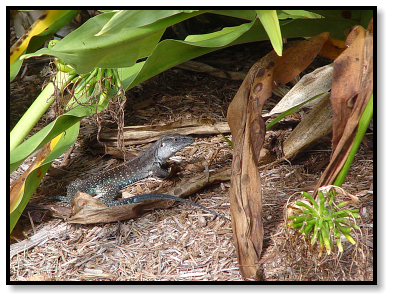
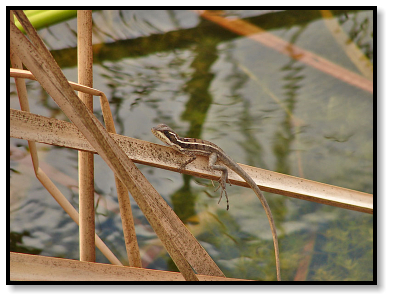
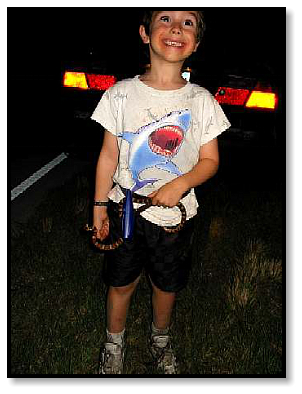
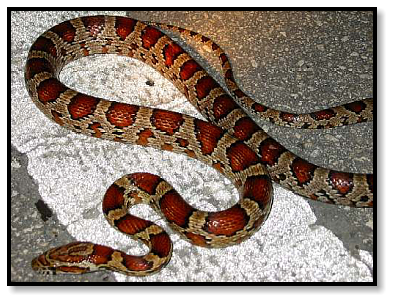
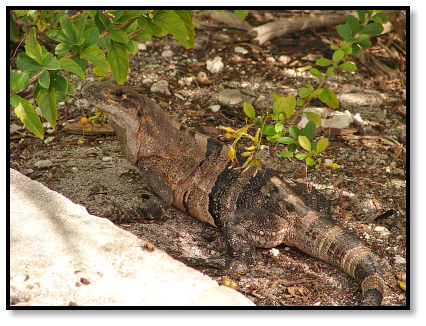


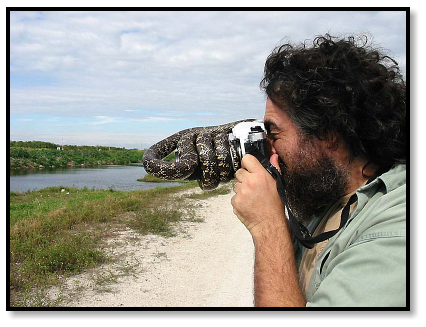
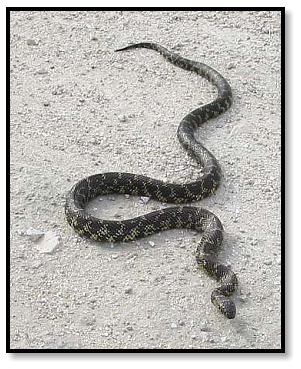
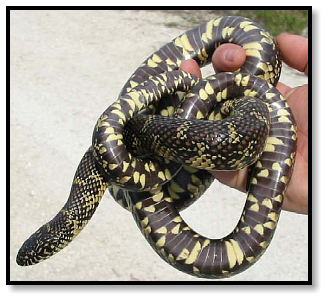
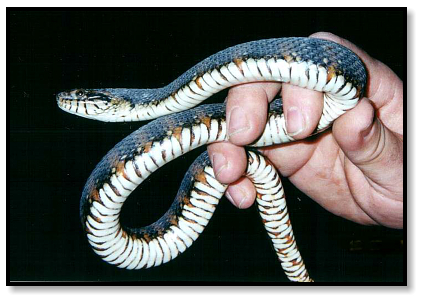

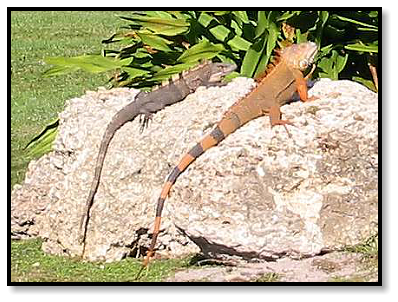
Black Spiny-Tailed Iguana
Ctenosaur similis
Green Iguana
Male - normal color
Giant Amieva
Ameiva ameiva
Striped Basilisk
Basiliscus vittatus
Black Spiny-Tailed Iguana
Ctenosaur similis
Florida Water Snake
Nerodia fasciata pictiventris
Corn Snake
Elaphe guttata guttata
Eastern Garter Snake
Thamnophis sirtalis sirtalis
Florida Kingsnake
Lampropeltis getula foridana
Green Iguana
Iguana iguana
Male - orange breeding color

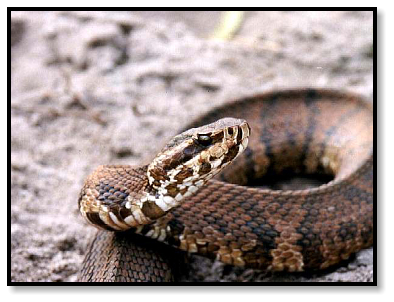
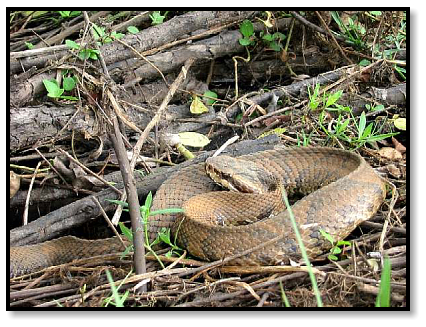
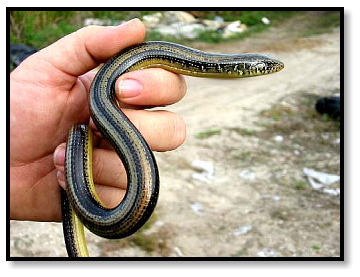
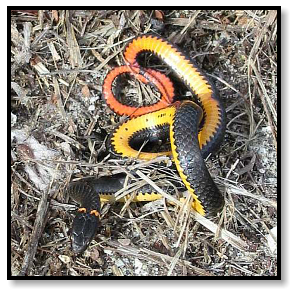
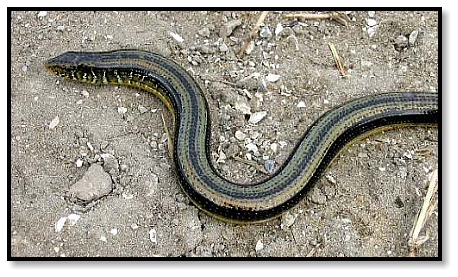
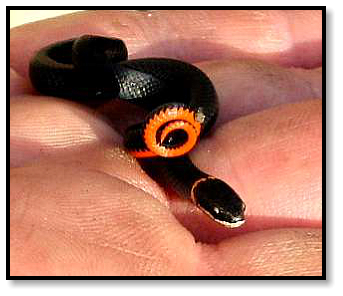
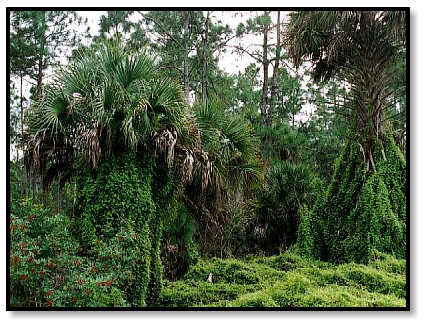
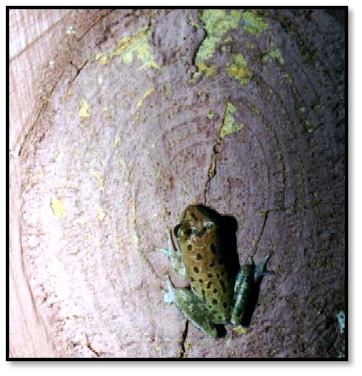
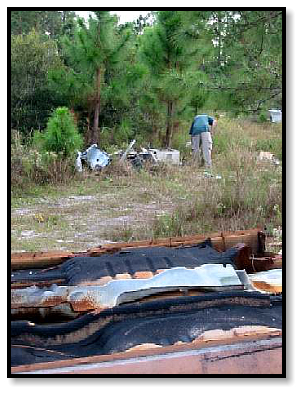

Island Glass Lizard
Ophisaurus compressus
Dusky Pygmy Rattlesnake
Sistrurus miliarius barbouri
Southern Ringneck Snake
Diadophis punctatus punctatus
Squirrel Treefrog
Hyla squirella







